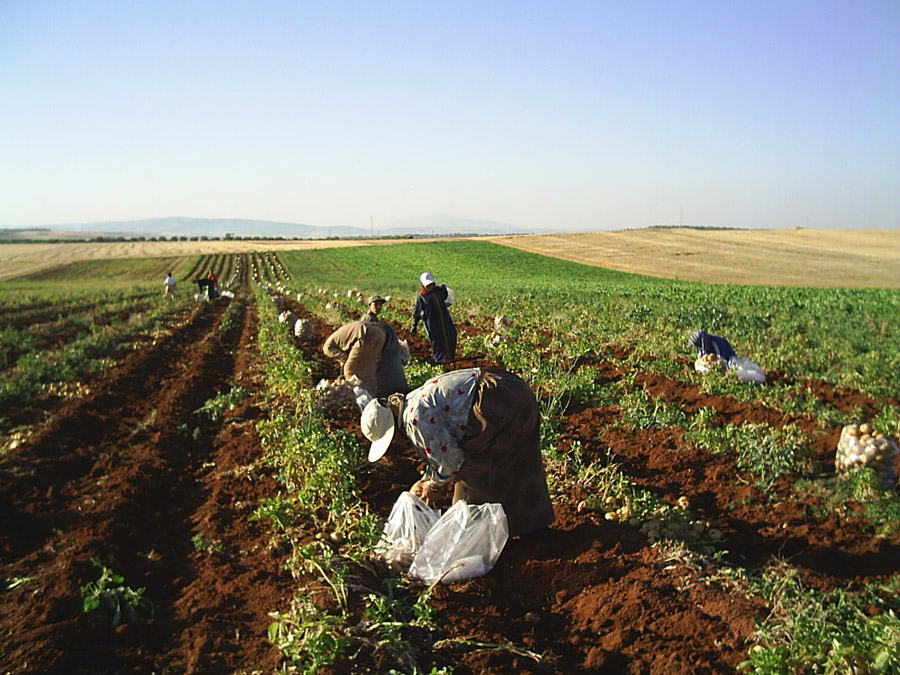Aiming at developing livestock and plant wealth in different parts of the province, Directorate of Agriculture and Agrarian Reform in Homs pursue the implementation of its set work plans in the various sections of the Directorate.
Work in the area of winter crops is currently being overseen throughout the province as the directorate is also conducting an assessment for the summer crops, including vegetables and fruits.
Talking about the Animal Health Department work plan throughout October 2015, Head of the livestock department, Dr. Ahmed Shahoud said: “Livestock farming has seen a remarkable development, as a result of the stability experienced by the province, especially in the field of cattle-breeding and poultry for the production of poultry meat and eggs.
The Department is also providing veterinary drugs and carrying out the necessary tests and clinical treatments for animals in the state-owned farms and the private farms as well. It also provides medical services including diagnoses, preventive, anti-parasitic and treatments for the different kinds of animals that are bred in farms and in the farmers’ small properties”
Regarding the Prevention Directorate, Dr. Shahoud said:”
The directorate is working tirelessly for carrying out regulator campaigns in the field of Anti-vole and the eggplant wild herb.
It also supervises the plant quarantine centers that interested in the imported and exported vegetables and trans-products in the province.
Some 91 licenses for shops, malls and the companies that selling and handling agricultural materials and pesticides, have been given by the directorate.”
Concerning Plant Production Department, Eng. Yousef Hamdan, head of plant wealth department, said: “We do our best for the implementation of the directorate drawn up plans for producing fruitful seedlings as well as supervising the orchards and following up the execution of production plans throughout the governorate.
There are seven centers affiliated to the directorate. Two of them are for producing seedlings, three centers as main orchards in addition to three centers for palm propagation.
To follow-up the reality of trees production and to supervise the olive presses in the province are the most important tasks of the Department specialized offices. Figures show that there are( 42) of olive presses in Homs. The amount of olive received by olive presses reach to( 42 600) tons. While the oil production amounted to (7, 600) tons in 2014.
The total number of citrus fruitful trees reached (293 575). The executed production amount to (7888) tons.
The number of olive trees has reached (11065115) scoring production capacity estimated at (93 692) tons.
Amal Farhat – Homs Correspondent

